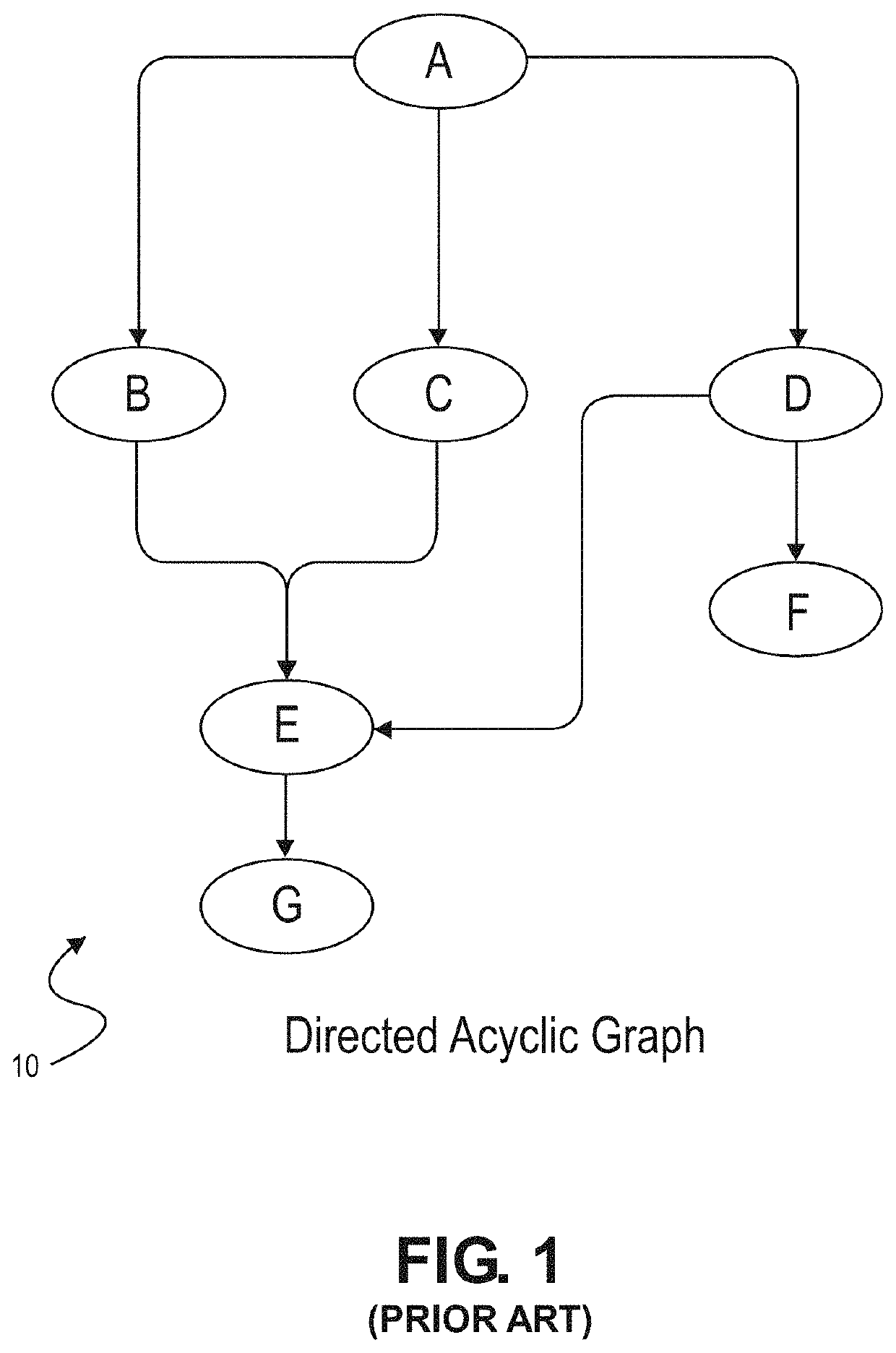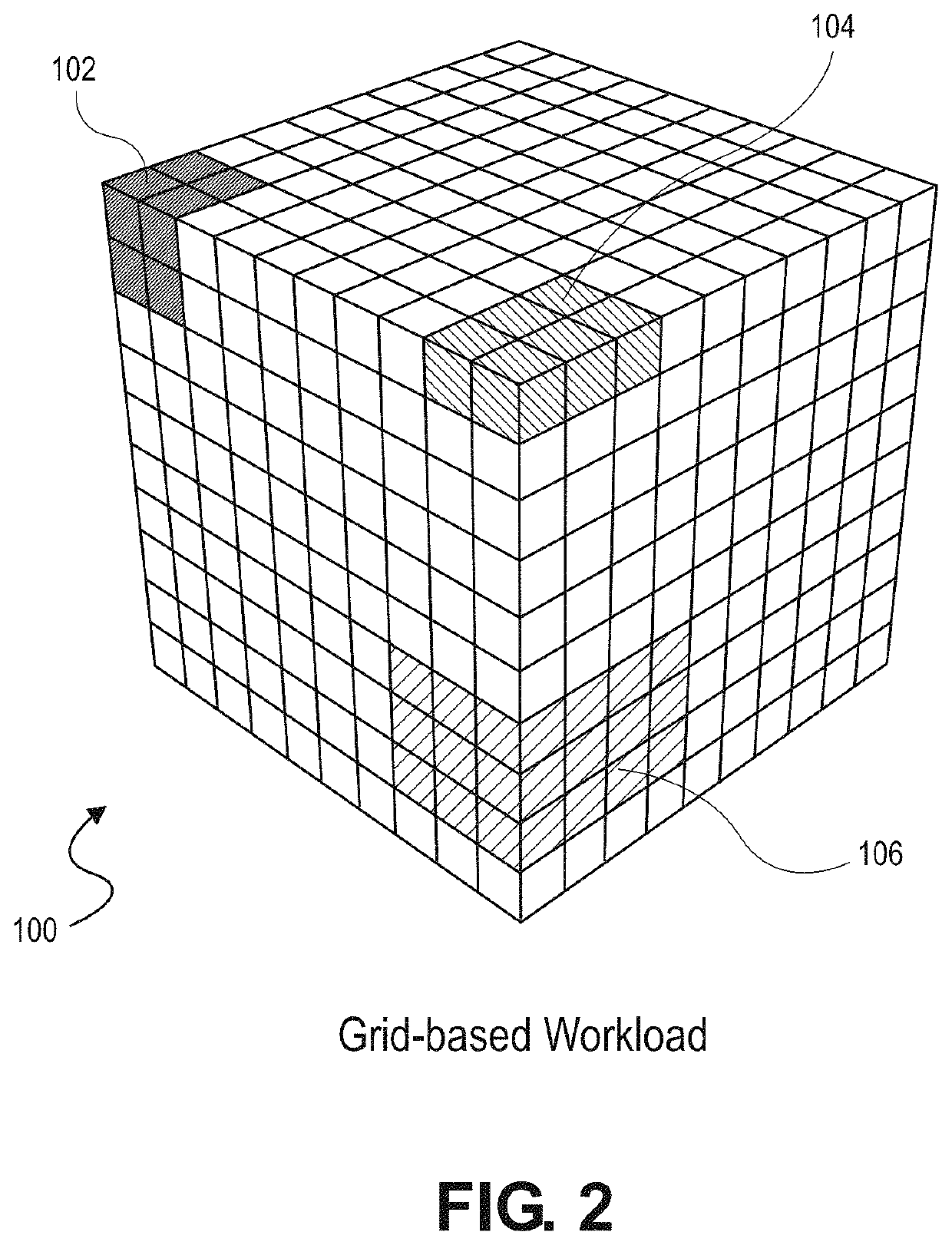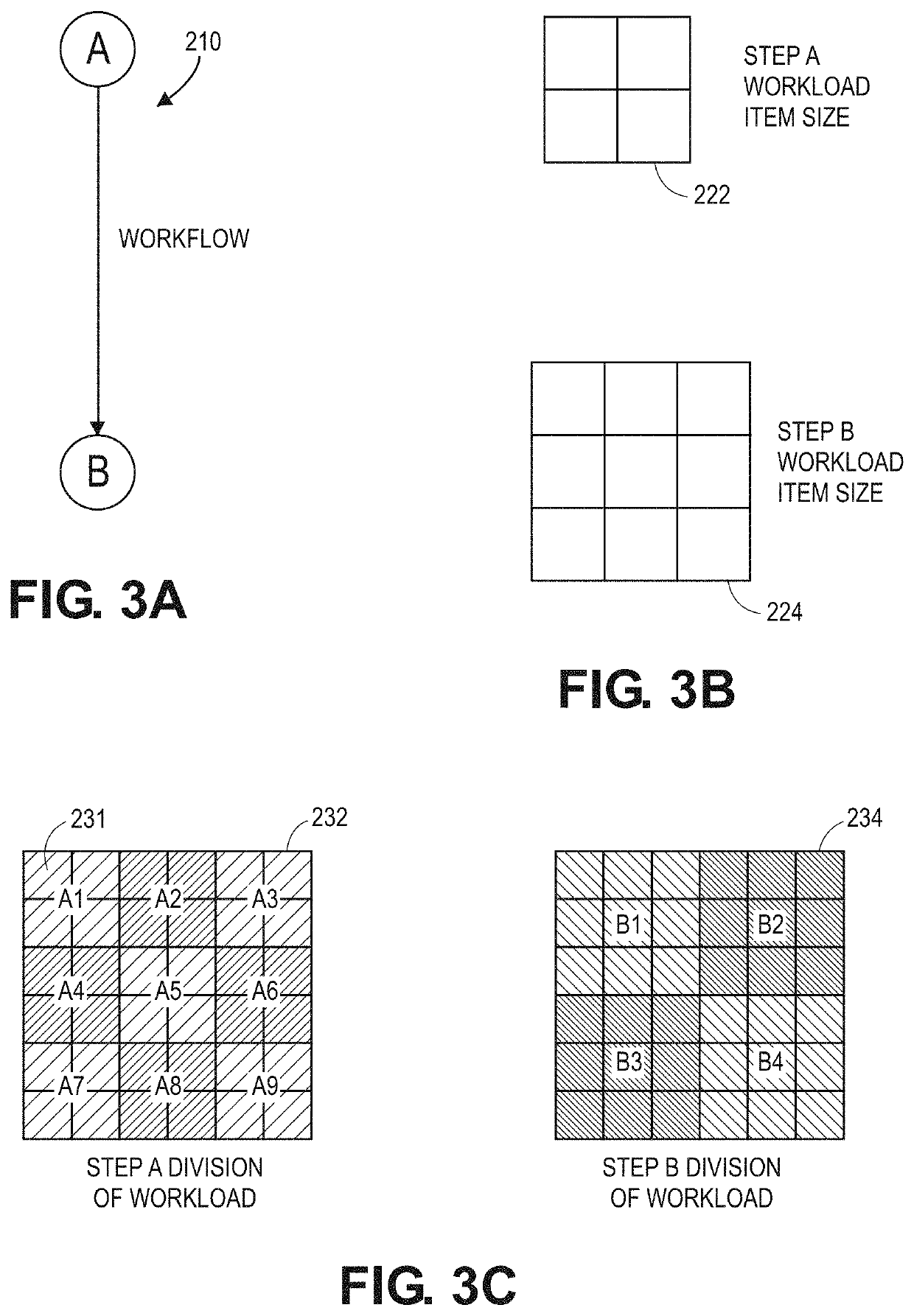Geo-spatial workload scheduling in distributed systems
a distributed system and workload technology, applied in the direction of program control, interprogram communication, multi-programming arrangements, etc., can solve the problems of slow overall processing, inability to efficiently utilize compute nodes, unrealistic size or amount of workload items, etc., to reduce network traffic and i/o, faster turnaround time, and less cost
- Summary
- Abstract
- Description
- Claims
- Application Information
AI Technical Summary
Benefits of technology
Problems solved by technology
Method used
Image
Examples
Embodiment Construction
[0027]FIG. 1 shows a (prior art) directed acyclic graph (DAG) 10. Like other workflow engines, the present invention enables the definition of workflow steps and their dependencies as a directed acyclic dependency graph. Steps can depend upon the results of previous steps: single dependency, e.g., G depends on E, or multiple dependencies, e.g., E depends on results of B, C, and D. In addition, steps can provide results for one or more following steps, e.g., B for E (single), and D for E and F (multiple).
[0028]Unlike the prior art, though, the present invention enables geospatial dependencies between workload items, and these workload items may vary in size, grouping or composition from step to step. Considering, for example, the processing of two-dimensional aerial images, a first step uses a computer model to detect buildings and a second step uses vectorization to detect building footprints in order to determine polygons. In the prior art, the first step must detect all buildings ...
PUM
 Login to View More
Login to View More Abstract
Description
Claims
Application Information
 Login to View More
Login to View More - R&D
- Intellectual Property
- Life Sciences
- Materials
- Tech Scout
- Unparalleled Data Quality
- Higher Quality Content
- 60% Fewer Hallucinations
Browse by: Latest US Patents, China's latest patents, Technical Efficacy Thesaurus, Application Domain, Technology Topic, Popular Technical Reports.
© 2025 PatSnap. All rights reserved.Legal|Privacy policy|Modern Slavery Act Transparency Statement|Sitemap|About US| Contact US: help@patsnap.com



